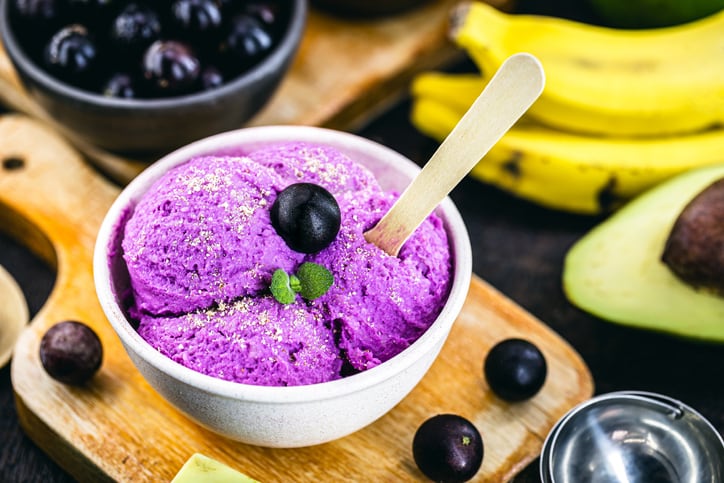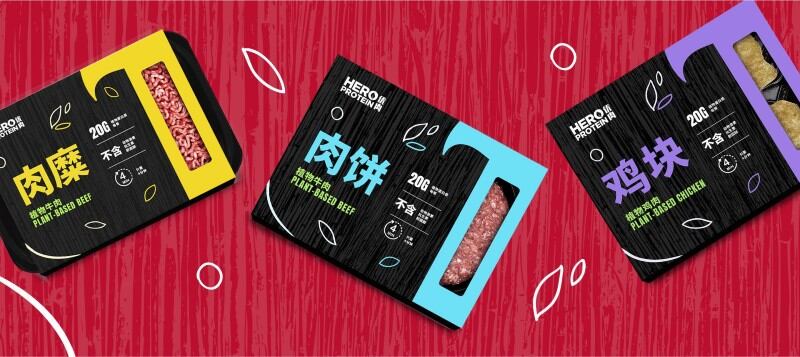Mouthfeel plays an important role in providing texture, and contributes to the sensory profile of a food.
Plant-based products are made using plant ingredients such as grains, legumes, fruits and vegetables which typically gives a mushy texture, lacking the “bite” factor found in non-plant-based products.
Dairy-free sector
In the dairy-free sector, creating the right consistency of ice cream is a challenge for any manufacturers.
Kamesh Ellajosyula, chief innovation officer at Olam Food Ingredients said: “The challenge with creating dairy-free ice cream is ensuring that consumers are not missing out on the creamy indulgent texture of an ice cream made with dairy.”
Ellajosyula explained that cocoa ingredients such as cocoa butters and nut butters can add creaminess to plant-based ice creams.
Another common problem affecting the texture of ice cream is the presence of icicles (ice crystals), which can also affect the taste.
Sam Appalasami, head of functional products at Musim Mas Group said: “Icicles also affect the taste of ice cream, since it creates crunch and affects the smooth uniform taste expected in an ice cream.”
Typically, emulsifiers are used to reduce icicle formation, to give a smooth texture and subsequently taste.
Another area is plant-based milk, where flavour and texture can be challenging to optimise compared to dairy alternatives.
While cocoa ingredients, emulsifiers and stabilisers can help, Ellajosyula said enhancing the flavour and texture of nut milk was difficult to achieve with cocoa ingredients alone.
So, the company is working on a powder to boost the texture and flavour of nut milks, by using ingredients like nutmeg, cinnamon and saffron alongside cocoa.
For Musim Mas, it is currently working with two companies in Israel and South Korea to develop a non-dairy whipping cream with the full functionality of a dairy version.
Plant-based protein and snacks
In addition to the growing dairy-free market, APAC is experiencing a big demand for plant-based meat and fish products.
Some of the challenges including recreating the fibrous texture of muscle, and succulent mouthfeel found in meat-based products, according to Gilbert Verschelling, director of business development & innovation at DSM.
“In meat products, the fat present is released in a different way to the oils and fats imparted by plant-based protein during consumption, which can make it difficult to achieve the authentic ‘chewiness’.”
Hydrocolloids are typically used to improve the product’s water binding capacity to create a juicy mouthfeel.
According to Verschelling, sodium reduction also remains a complex task for many manufacturers, as salt typically has multiple functions from binding, preservation to taste enhancement in plant-based meat and fish products.
Yeast extracts can be incorporated to create the succulent mouthfeel, without the need to add sodium.
The plant-based snacks market has also seen increasing demand accelerated by COVID-19, as health and wellness take priority for many consumers.
Ellajosyula said adding extra flavour whilst improving the mouthfeel is important in plant-based snacking: “Ingredients such as onion and garlic powders can be applied to snacks like chips to improve the taste and keep the chips from sticking to one another, resulting in a drier, crispier mouthfeel.”
Spice level also plays a key role in mouthfeel, one example is the mala trend in Asia.
Made from Sichuan peppercorns and chilli pepper, “the spice blend creates a mouth-numbing effect which combines well with the mouth-watering sensation caused by the acidic ingredients in the seasoning.”
“We first saw this innovative blend emerge in hot pot restaurants before moving to snacks and now quick service restaurants where KFC and McDonalds started offering mala-flavoured chicken and fries.”
The spices in other spicy flavours such as curry (turmeric, black pepper, cinnamon), have tannic properties that pull up the gums to create an interesting mouthfeel.




